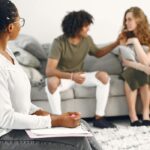Navigating Everyday Life with Autism: 8 Daily Routines for Comfort and Stress Reduction
Individuals with autism spectrum disorder (ASD) endure unique obstacles, particularly when it comes to daily plans. Setting up consistent actions not only offers relief ,but also helps diminish anxiety and stress. In this article, we will investigate eight necessary daily plans made for individuals Navigating Everyday Life with Autism, providing an understanding of how these routines can guide to a more satisfying life.
Understanding the Importance of Daily Routines for Individuals Navigating everyday life with Autism
For many individuals on the autism spectrum, predictability and structure are essential for inner well-being. Daily plans help generate a feeling of security, creating a manageable world. Consistent practices can weaken anxiety by giving a clear roadmap for the day onwards. They also encourage independence, qualifying individuals to navigate their environments with trust.
8 Essential Daily Routines to Enhance Comfort and Reduce Stress in Autism
1. Morning Structure: Starting the Day Right
A consistent morning routine leaves a definite tone for the day. This might comprise a series of activities such as waking up at the same time daily, ensuring a personal cleansing plan, enjoying breakfast, and maybe a short mindfulness practice.
Importance: A structured start diminishes morning confusion, helping individuals feel ready and stimulating a positive mindset for the day. By creating predictability, individuals can diminish anxiety and better control the day and ahead improve mental health.
2. Sensory-Friendly Spaces: Creating a Comfortable Environment
Individuals with autism frequently have an overload of sensory feelings. Marking particular areas in the home as sensory-friendly can supply a retreat when the world experiences overwhelming. This could involve faint lighting, delicate and soft clothes, and sound-neutralizing headphones.
Importance: Creating a heaven grants individuals to control sensory overstimulation successfully, encouraging inner management and diminishing anxiety. A calming environment can also work as a restorative space, making it easier to use better management plans during difficult times.

3. Mindfulness and Relaxation Techniques: Daily Practices to Calm the Mind
Incorporating mindfulness practices into everyday plans can notably diminish stress levels. Techniques such as extending breathing, continuing muscle moderation, or short guided meditations can effortlessly be added into the daily routine.
Importance: These plans help develop skills for controlling anxiety, making focus finer, and guiding to appreciable emotional resilience. Mindfulness can also promote a big awareness of one’s feelings, permitting better self-management during difficult moments.
4. Visual Schedules: A Tool for Predictability
Visual schedules give a clear image of daily affairs, helping individuals acknowledge what to anticipate. These can be created using pictures, signs, or written instructions made according to the individual’s needs.
Importance: By displaying daily duties visually, individuals can diminish anxiety linked with uncertainty, obtaining an awareness of control over their day. This predictability not only relieves changes between activities but also intensifies trust in their capacity to navigate daily challenges.
5. Social Skills Practice: Building Connections Every Day
Social interactions can be demanding for individuals with autism. Developing social skills practice in the everyday can help, whether through role-playing outlines at home, engaging in social affairs, or simply having discussions with family members.
Importance: Regular practice provides trust in social conditions, increasing the capacity to link with others and diminishing social anxiety. Improving social skills also encourage stronger relationships and generate chances for significant interactions.
6. Physical Activity: Incorporating Movement into Daily Life
Regular physical activity provides advantages for overall well-being and can help minimize anxiety. Pleasurable outings such as walking, dancing, or yoga can be included in the daily schedule.
Importance: Physical activity delivers endorphins, creating a better mood and acting as a natural stress diminisher, giving significant gains to both mental and physical health. Engaging in movement also encourages self-esteem and a feeling of achievement, which can further increase emotional well-being.
7. Healthy Eating Habits: Nutrition’s Role in Emotional Well-Being
Nutrition remarkably affects mental health. Setting up regular meal times and maintaining a stabilized diet can positively influence mood and energy levels. Involving individuals in meal organization and preparation encourages a feeling of ownership and achievement.
Importance: A nutritious diet powers the body and mind, guiding to refined focus, mood stabilization, and overall inner well-being. Healthy eating routines can also diminish the possibility of mood swings and encourage greater emotional stability throughout the day.
8. Wind Down: Establishing a Relaxing Evening Routine
A soothing evening routine is essential for encouraging relaxed sleep. This may incorporate tasks such as reading, stretching, or paying attention to soothing music.
Importance: A consistent wind-down routine signals to the body that it’s time to ease, making better sleep quality and overall emotional health—important for working well the next day. A good night’s sleep can amplify mood and cognitive function, making daily challenges more achievable.
Points for Parents: Supporting Your Child’s Navigating Everyday life with Autism
Parents play an essential role in executing these daily plans. Here are some practical tips:
- Communicate Clearly: Use simple language and visual aids to explain routines.
- Be Consistent: Try to maintain routines even during weekends or holidays to foster stability.
- Encourage Independence: Gently permit your child to take charge of their plans, instructing as needed.
- Celebrate Small Wins: Accept and celebrate achievements; no problems if these achievements are small, to raise self belief.
Frequently Asked Questions about Daily Routines for Autism
Q: How can I help my child adapt to a new routine?
A: Introduce changes gradually and use visual schedules to help them understand the new routine. Consistency is key, so try to maintain a predictable structure.
Q: What could I do if my child resists routine changes?
A: Speak to your child about the changes and implement a procedure. When they contribute to creating a routine, it can help them feel more in power and diminish resistance.
Q: How could I encourage my child to engage in physical activities?
A: Discover activities that line up with your child’s interests and make them fun. Consider joining in on the activities together to create a positive experience.
Q: Would there be specific mindfulness techniques that work best for children with autism?
A: Techniques such as extended breathing exercises, lead imagery, or simple yoga could be successful. It’s crucial to discover what resonates with your child.
Q: How do visual schedules help in daily routines?
A: Visual schedules provide clear expectations and transitions between activities, reducing anxiety and promoting independence in following routines.
Conclusion:
Everyday plans can remarkably amplify the quality of life for individuals with autism. By creating structure, individuals can navigate their environments with confidence and comfort. Applying these procedures not only supports inner well-being but also encourages autonomy, helping individuals thrive in their everyday lives.
By getting knowledge about the significance of daily plans and being consistent with their execution, we can improve the life of those on the autism spectrum to recover their peace and live more fulfilling lives.


